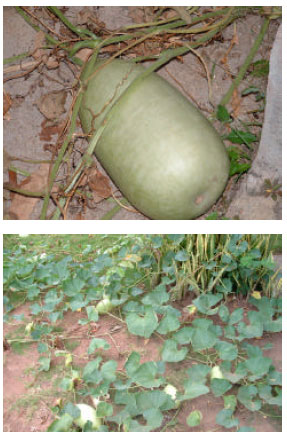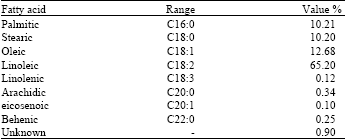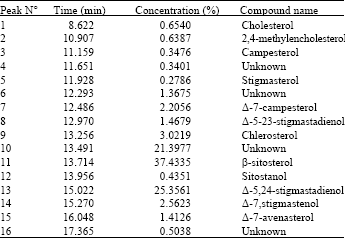Research Article
Fatty Acids and Unsaponifiable Composition of Cucumis amaris Seeds Oil
National Polytechnic Institute Felix HOUPHOLY, T-BOIGNY, Laboratory of Industrial Processes, Synthesis and the Environment, BP 991 Yamoussoukro (Ivory Coast)
Soro Yaya
National Polytechnic Institute Felix HOUPHOLY, T-BOIGNY, Laboratory of Industrial Processes, Synthesis and the Environment, BP 991 Yamoussoukro (Ivory Coast)
Adima Amissa Augustin
National Polytechnic Institute Felix HOUPHOLY, T-BOIGNY, Laboratory of Industrial Processes, Synthesis and the Environment, BP 991 Yamoussoukro (Ivory Coast)
Lemee Laurent
National Polytechnic Institute Felix HOUPHOLY, T-BOIGNY, Laboratory of Industrial Processes, Synthesis and the Environment, BP 991 Yamoussoukro (Ivory Coast)












